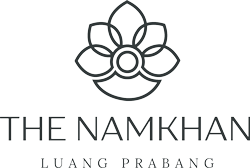Asiatic Pennywort- Healthy Nutrition
A beautiful scene is always created whenever flowers of Asiatic pennywort open on its plant. It gives a memorable visual impression with patches of green to reddish-green color stems on which the flowers are borne. Scientifically known as Centella Asiatica, Asiatic pennywort has long stalks with green and round top that is smooth to feel. The flowers are white or reddish-pink in color and grow close to the soil surface.


Season and Cultivation
Asiatic pennywort originated from the Indian subcontinent, Southeast Asia, and swampy regions of the Southeastern United States. It is an aquatic plant, as such, it is cultivated in an area with a plentiful supply of water and low temperature. Asian pennywort is propagated using its rhizomes.
Nutritional Facts


Asiatic pennywort has an abundant supply of vitamins, calcium, magnesium, sodium, manganese, and zinc. It contains the right mix of these essential nutrients and combines to give the body vitality and healthy living. This is why many refer to pennywort tea as a health tonic.
Medicinal Use
Medicinally, there are diverse uses to which pennywort plant can be put. It can be made into herb which can assist in the absorption of the nutrient. Also, because Asiatic pennywort is antibacterial and anti-inflammatory, it prevents cancer. The plant also has vitamins, minerals, and calcium which help in treating arthritis.
Pennywort eliminates toxins from the immune system. It regulates blood pressure, prevents heart failure, urinary tract infections.


Other Uses


Asian pennywort is a worthy mention when it comes to memory boosting foods and hair growth. The herb is also useful in preventing aging as well as reducing cellulite in women. Pennyworth also helps in correcting sleeping disorders.
Culinary Uses


The leaves of Asiatic pennywort have a sweet and at the same time sour flavor, and it is commonly used in Asian cuisine. In Vietnam, pennywort leaves are usually made into a sweetened soft drink and canned as a refreshing drink. In Indian culinary, pennywort, known as “Igotu kola,” or “Brahmi” is sometimes eaten raw or cooked in curries. A yummy example of the Asian pennywort is pennywort salad with soya bean.
At the Namkhan village, guests will get to enjoy delicious meals prepared with fresh herbs like the Asian pennywort. Our Spanish Mediterranean inspired organic restaurants will offer as much as possible from the farm. Our cuisines include salads, micro greens, and salads juices, vegetable fruit smoothies, some Spanish tapas, or tortillas.


